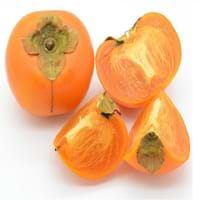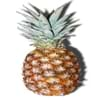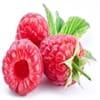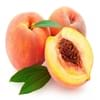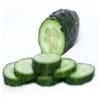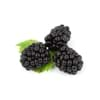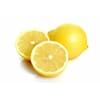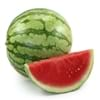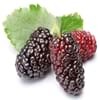Health Benefits
Asthma treatment, Bronchitis treatment, Cancer prevention, Heart care, Increases metabolic rate
Cancer prevention, Heart care, Heat stroke treatment, Improves eye vision, Weight loss properties
General Benefits
Anti-inflammatory properties, Controls blood pressure, Digestive aid, Eye care, Healing of wounds, Maintains healthy cholesterol level, Strengthens bones, Treatment of sinusitis, Treatment of common cold
Anti-inflammatory properties, Boosts immune system, Cures cough, Digestive aid, Fights against infections, Improves blood circulation
Skin Benefits
Anti-aging benefits, Brightens and lightens complexion, Skin cleansing, Treatment of acne, Treatment of dark spots
Anti-aging benefits, Brightens and lightens complexion, Reduces wrinkles
Hair Benefits
Prevents hair loss
Promotes longer and healthier hair, Protects hair
Allergy Symptoms
Abdominal pains, Itching in tongue and other parts of mouth, Sneezing, Swelling, Tingling sensation in wrist and face, Vomiting, Wheezing
Abdominal pains, Anaphylaxis, Inflammation
Side Effects
Causes swollen mouth, Allergic reaction, Diarrhoea, Nausea, Skin rash, Vomiting
Diarrhoea, Might affect blood pressure level
Best Time to Eat
Best if taken as a breakfast (or empty stomach), As a snack in the late afternoon, Eat the fresh ones, avoid mixing with any other foods, don't eat after meal., Morning time (before lunch)
Along with meal, As a snack in the late afternoon, Don't consume at night and before bed, Morning time (before lunch)
Vitamin B5 (Pantothenic Acid)
Not Available
Vitamin C (Ascorbic Acid)
Vitamin K (Phyllochinone)
Calories in Fresh Fruit with Peel
Not Available
Calories in Fresh Fruit without Peel
Not Available
Calories in Frozen Form
Not Available
Calories in Canned Form
Not Available
Type
Berry, Tropical
Berry, Tree fruit
Season
Autumn
Autumn, Winter
Varieties
Smooth Cayenne, Abacaxi, Red Spanish and Queen
Fuyu, Jiro, Gosho, Suruga, Hiratanenashi, Hachiya, Aizumishirazu, Yotsumizo, Yokono, Costata, Ormond and Tamopan
Color
Yellow
Orange, Red, Yellow
Inside Color
Yellow
Orange
Taste
Strong, Sweet, Tart
Sweet
Origin
Central America, South America
Burma, China, India, Japan
Grows on
Not Available
Trees
Soil Type
Clay, Sandy loam, Well-drained
Sandy loam, Well-drained
Climatic Conditions
Hot, Sunny
Can tolerate wide range of climates
Facts about
- A single pineapple takes 3 years to reach maturation.
- Pineapple is not an apple, but is actually a berry.
- The name is with reference to its resemblance to pine cones.
- Pineapple is sweeter if scales are more.
- Unripe persimmons contain lots of tannin which is used to brew sake & to preserve wood in Japan.
- A small non-edible fruit of persimmon tree is crushed with water, the solution is painted on paper & used to repel mosquitoes.
Spirits
Yes
Not Available
Cocktails
Yes
Not Available
Top Producer
Costa Rica
China
Other Countries
Brazil, India, Philippines, Thailand
Azerbaijan, Brazil, Israel, Italy, Japan, Pakistan
Top Importer
United States of America
United States of America
Top Exporter
Costa Rica
Japan
Botanical Name
Ananas comosus
Diospyros kaki
Synonym
Ananas sativus
Not Available
Subkingdom
Tracheobionta
Tracheobionta
Division
Magnoliophyta
Magnoliophyta
Class
Liliopsida
Magnoliopsida
Subclass
Commelinidae
Dillenhidae
Family
Bromeliaceae
Ebenaceae
Species
A. comosus
D. kaki
Generic Group
Pineapple
Not Available
Difference Between Pineapple and Japanese Persimmon
We might think that Pineapple and Japanese Persimmon are similar with respect to nutritional value and health benefits. But the nutrient content of both fruits is different. Pineapple and Japanese Persimmon Facts such as their taste, shape, color, and size are also distinct. The difference between Pineapple and Japanese Persimmon is explained here.
The amount of calories in 100 gm of fresh Pineapple and Japanese Persimmon with peel is Not Available and 70.00 kcal and the amount of calories without peel is 50.00 kcal and Not Available respectively. Thus, Pineapple and Japanese Persimmon belong to Low Calorie Fruits and Low Calorie Fruits category.These fruits might or might not differ with respect to their scientific classification. The order of Pineapple and Japanese Persimmon is Poales and Ericales respectively. Pineapple belongs to Bromeliaceae family and Japanese Persimmon belongs to Ebenaceae family. Pineapple belongs to Ananas genus of A. comosus species and Japanese Persimmon belongs to Diospyros genus of D. kaki species. Beings plants, both fruits belong to Plantae Kingdom.

